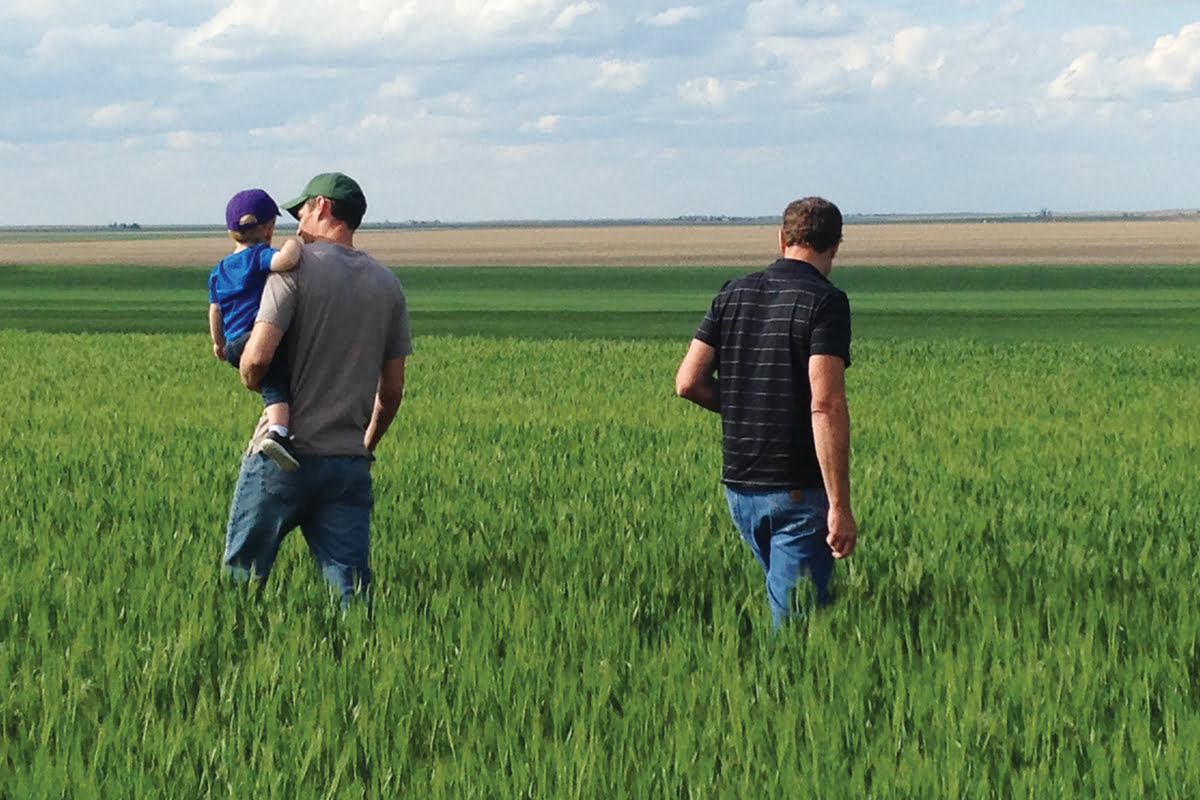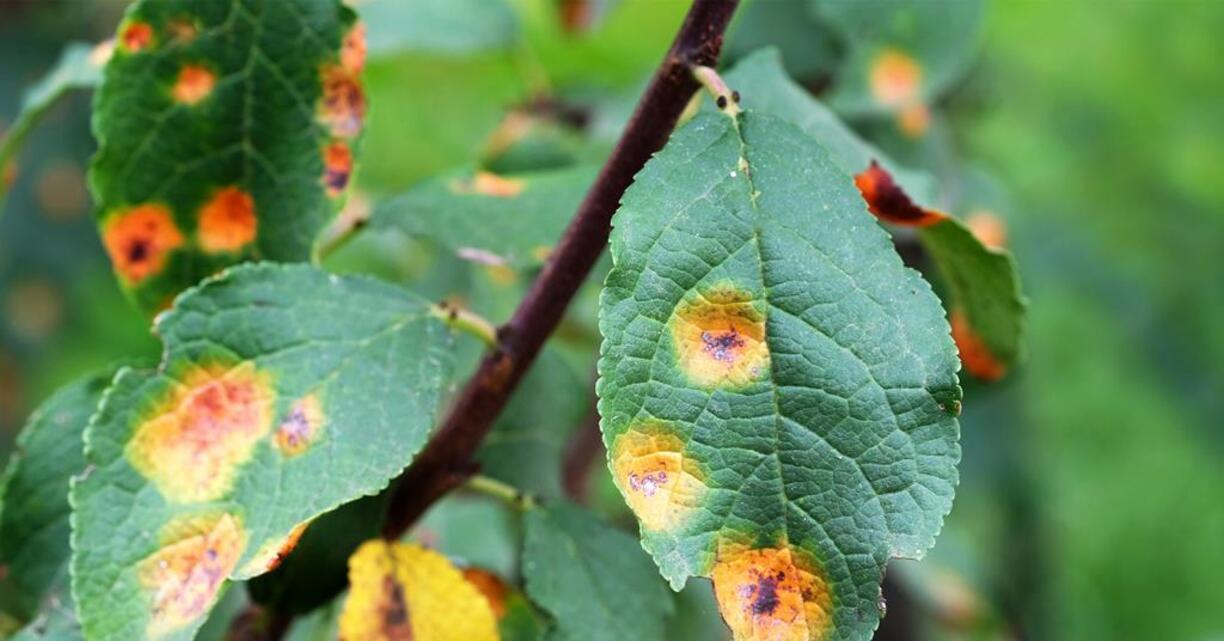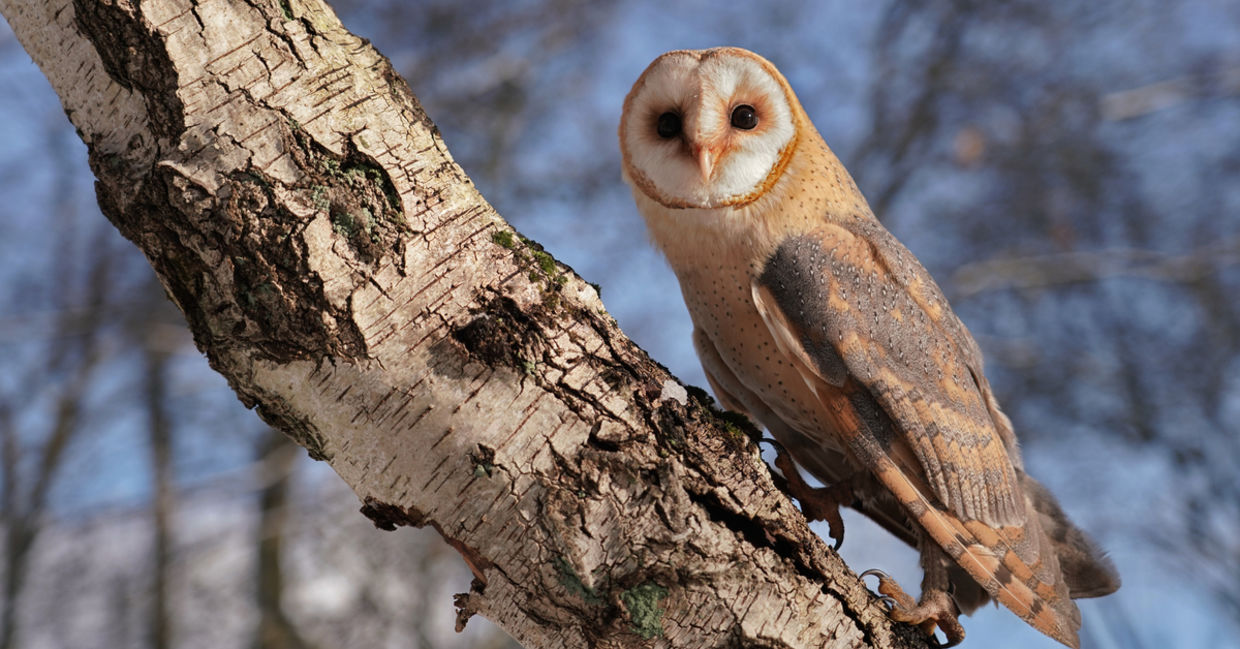Home>Gardening News and Trends>Latest News>Why Are Pesticides Bad


Latest News
Why Are Pesticides Bad
Modified: February 10, 2024
Discover the latest news on why pesticides are bad for the environment and your health. Stay informed with the most up-to-date information on pesticide risks and alternatives.
(Many of the links in this article redirect to a specific reviewed product. Your purchase of these products through affiliate links helps to generate commission for Chicagolandgardening.com, at no extra cost. Learn more)
Table of Contents
- Introduction
- Environmental Impacts of Pesticides
- Negative Effects on Human Health
- Harmful Effects on Wildlife
- Destruction of Beneficial Insects
- Contamination of Soil and Water
- Residues in Food and Potential Risk to Consumers
- Pesticide Resistance and Its Consequences
- Alternatives to Chemical Pesticides
- Conclusion
Introduction
Pesticides are commonly used substances in the agricultural industry to protect crops from pests, diseases, and weeds. They come in various forms, including insecticides, herbicides, fungicides, and rodenticides. While pesticides play a crucial role in maximizing food production and ensuring high-quality yields, their indiscriminate use can have significant negative consequences for the environment, human health, and wildlife.
The detrimental effects of pesticides are a growing concern globally, as their toxic chemicals not only impact the targeted pests but also have far-reaching consequences for the ecosystem as a whole. The use of pesticides has been linked to the contamination of soil, water bodies, and even the food we consume, raising questions about the sustainability and long-term viability of relying heavily on these chemicals to control pests.
This article aims to shed light on the numerous reasons why pesticides are bad for the environment and our overall well-being. By examining their environmental impacts, negative effects on human health, harm to wildlife, destruction of beneficial insects, contamination of soil and water, residues in food, and the development of pesticide resistance, we can better understand the urgency to explore alternative methods of pest control.
Furthermore, this article will discuss the potential alternatives to chemical pesticides, including natural pest management techniques, integrated pest management (IPM), and organic farming practices. These alternatives offer safer and more sustainable approaches to pest control, reducing our dependency on harmful pesticides while preserving the health of our ecosystems and the human populations that rely on them.
It is important to note that while the negative impacts of pesticides are a cause for concern, their regulation and responsible use can mitigate some of the risks associated with their use. However, it is crucial to acknowledge the need to prioritize sustainable agricultural practices that minimize harm to the environment and prioritize human and wildlife health.
Environmental Impacts of Pesticides
Pesticides have significant environmental impacts that extend beyond their intended targets. When sprayed or applied to crops, these chemicals can infiltrate the surrounding ecosystems and have adverse effects on various organisms and natural processes. Some of the key environmental impacts of pesticides are discussed below.
1. Soil Contamination: Pesticides can persist in the soil for long periods, leading to soil contamination. This can result in a decline in soil quality, affecting the fertility and nutrient content essential for plant growth. Soil microorganisms, which play a vital role in maintaining healthy soil ecosystems and nutrient cycling, can also be harmed by pesticide residues.
2. Water Pollution: Pesticides have the potential to contaminate water bodies through runoff or leaching. When pesticides are sprayed on fields, they can be carried away by rainwater or irrigation systems, eventually reaching nearby rivers, streams, and groundwater sources. This pollution not only poses a risk to aquatic organisms but also threatens the overall quality and availability of freshwater resources.
3. Impact on Non-Target Organisms: Pesticides are designed to kill or control specific pests, but they often harm non-target organisms as well. Beneficial insects like bees, butterflies, and ladybugs, which play vital roles in pollination and natural pest control, can be unintentionally affected. Furthermore, birds, fish, and other wildlife may be contaminated when they consume prey or plants treated with pesticides, disrupting fragile ecosystems.
4. Negative Effects on Biodiversity: The widespread use of pesticides has led to a decline in biodiversity, as many species dependent on healthy ecosystems are negatively affected. The loss of pollinators, such as bees, can have far-reaching consequences for food production and the reproduction of numerous plant species. Additionally, the reduction of beneficial insects can disrupt the balance of predator-prey relationships in ecosystems.
5. Disruption of Natural Processes: Pesticides can disrupt natural processes critical to ecosystem functioning. For example, the use of insecticides can wipe out populations of insects that decompose organic matter, leading to a buildup of dead organic material and disrupting nutrient cycling in the environment.
Reducing the environmental impacts of pesticides requires a shift towards more sustainable and eco-friendly approaches to pest control. Embracing integrated pest management (IPM) techniques, which involve the judicious use of pesticides, combined with other control methods such as crop rotation, biological control, and cultural practices, can help mitigate the negative environmental consequences associated with pesticides.
It’s important to recognize that the negative environmental impacts of pesticides are not confined to a specific region or ecosystem; they have global implications. Taking proactive steps to reduce pesticide use and promote environmentally friendly alternatives is crucial to protect our natural resources and ensure a sustainable future for generations to come.
Negative Effects on Human Health
Pesticides pose significant risks to human health due to their toxic nature. Exposure to these chemicals can occur through various pathways, including direct contact during application, consumption of contaminated food and water, and inhalation of pesticide residues in the air. The potential negative effects on human health are discussed below.
1. Acute Poisoning: Short-term exposure to high levels of pesticides can lead to acute poisoning symptoms such as nausea, dizziness, headaches, and even respiratory distress. This is particularly concerning for farmers, farmworkers, and pesticide applicators who handle these chemicals directly without proper protective equipment.
2. Chronic Health Effects: Long-term exposure to pesticides has been linked to a range of chronic health conditions. Epidemiological studies have shown associations between pesticide exposure and increased risks of certain cancers, including leukemia, lymphoma, and prostate cancer. Pesticide exposure has also been linked to neurological disorders, such as Parkinson’s disease, as well as reproductive problems and developmental issues in children.
3. Occupational Hazards: Farming communities and agricultural workers are particularly vulnerable to the negative health effects of pesticides. Prolonged exposure in these occupational settings can lead to chronic health problems, respiratory issues, skin disorders, and even higher risks of certain cancers. It is essential to prioritize safe working conditions and protective measures for those in the agricultural industry.
4. Contamination of Food: Pesticide residues can remain on crops even after they are harvested, processed, and brought to market. This means that people consuming conventionally grown fruits, vegetables, and other agricultural products may be exposed to pesticide residues. While regulatory agencies strive to establish safe tolerance levels for pesticide residues, the cumulative effects of long-term exposure to multiple pesticides remain a concern.
5. Vulnerability of Children: Children are particularly susceptible to the negative effects of pesticide exposure due to their developing bodies and behaviors that may increase their exposure. Studies have shown that exposure to pesticides during critical periods of growth and development can impair cognitive function, disrupt hormone regulation, and harm the developing nervous system.
Reducing the negative health effects of pesticides requires a comprehensive approach. This includes implementing stricter regulations on pesticide use, promoting protective measures and safe practices among farmers and farmworkers, and encouraging the consumption of organic and pesticide-free foods. Educating the public about the potential risks associated with pesticide exposure and advocating for sustainable agricultural practices can help mitigate the negative impact on human health.
It is essential to prioritize the well-being of both agricultural workers and consumers by advocating for safer pest management alternatives and supporting sustainable farming practices. By doing so, we can protect human health and reduce the potential long-term risks associated with pesticide exposure.
Harmful Effects on Wildlife
Pesticides not only pose a threat to human health but also have detrimental effects on wildlife populations. The widespread use of these chemicals can lead to direct and indirect harm to various species, disrupting ecological balance and biodiversity. The harmful effects on wildlife are discussed in detail below.
1. Direct Toxicity: Wildlife can be directly exposed to pesticides through contaminated food sources or by inhabiting areas where pesticides are extensively used. This exposure can lead to acute poisoning or death among animals. Birds, small mammals, amphibians, and fish are particularly susceptible to pesticide toxicity, as they may consume contaminated prey or come into direct contact with pesticide-treated areas.
2. Disruption of Reproduction: Pesticides can interfere with natural reproductive cycles of wildlife, causing decreased fertility rates, altered mating behaviors, and reproductive abnormalities. For example, certain pesticides have been linked to eggshell thinning in birds, leading to reduced hatching success and declining bird populations.
3. Impact on Aquatic Ecosystems: Pesticides that enter aquatic environments through runoff or direct application can have severe consequences for aquatic wildlife. Fish, invertebrates, and amphibians living in contaminated water bodies may experience reduced population numbers, genetic abnormalities, developmental issues, and impaired growth and reproduction.
4. Disruption of Food Chains: Pesticides can disrupt the delicate balance of food chains and ecological interactions. By eliminating targeted pests, these chemicals can indirectly harm species that rely on prey populations for food. For instance, the decline of pollinators due to pesticide exposure can have cascading effects, affecting the reproductive success of plants and subsequently impacting other wildlife dependent on those plants for food or shelter.
5. Bioaccumulation: Pesticides can accumulate in the tissues of organisms over time, a process known as bioaccumulation. This means that as animals consume pesticide-contaminated food sources, the chemicals become concentrated in their bodies. As a result, higher-level predators can experience greater levels of pesticide exposure. This bioaccumulation can lead to long-term health issues, reproductive abnormalities, and even population declines among species.
To mitigate the harmful effects of pesticides on wildlife, it is crucial to implement responsible pest management strategies that prioritize the protection of non-target species and ecosystems. This includes minimizing pesticide use, adopting integrated pest management (IPM) techniques, and promoting organic farming practices. Additionally, creating protected habitats and conserving natural areas can provide refuge for wildlife populations and support their recovery.
Preserving biodiversity and safeguarding wildlife requires a collective effort to reduce pesticide use and prioritize sustainable agricultural practices. By doing so, we can protect and restore the delicate balance of ecosystems and ensure the survival and well-being of wildlife species for generations to come.
Destruction of Beneficial Insects
Pesticides not only target and eliminate harmful pests but also unintentionally harm beneficial insects that play essential roles in ecosystems. These beneficial insects include pollinators, predators, and parasitoids that contribute to natural pest control and the overall health of agricultural systems. The destruction of these beneficial insects can have significant consequences, as discussed below.
1. Pollinator Decline: Pollinators, such as bees, butterflies, and other insects, are crucial for the reproduction of numerous plant species. They transfer pollen from the male parts of flowers to the female parts, enabling fertilization and the production of fruits and seeds. However, the indiscriminate use of pesticides can result in the unintentional poisoning of pollinators, leading to declines in their populations. This decline has far-reaching effects on crop production, affecting both food availability and the sustainability of ecosystems.
2. Natural Pest Control Disruption: Beneficial insects, including parasitoids and predators, are natural enemies of pests. They suppress pest populations by either preying on them or laying their eggs on pests, leading to their eventual demise. When pesticides are applied, they not only kill the targeted pests but also harm these beneficial insects. This disrupts the delicate balance of natural pest control, allowing pest populations to rebound and potentially requiring more pesticides to regain control.
3. Impact on Ecological Balance: Beneficial insects play vital roles in maintaining ecological balance and biodiversity. By targeting and eliminating pests, they help prevent pest outbreaks and reduce the need for chemical pesticides. However, the destruction of beneficial insects through pesticide use can lead to imbalances in ecosystems, allowing pest populations to increase and potentially causing cascading effects on the entire food web.
4. Decline of Insect Diversity: Pesticides can contribute to the decline of overall insect diversity. Beneficial insects are part of a diverse array of species that make up ecosystems. Their loss can result in a significant reduction in insect biodiversity. This loss affects not only the functioning of ecosystems but also future discoveries and potential benefits that may come from the study of these insects.
5. Implications for Food Security: The destruction of beneficial insects poses risks to food security and agricultural productivity. The decline of pollinators, in particular, can result in reduced crop yields and lower-quality fruits and seeds. This not only affects commercial agriculture but also impacts subsistence farming, where local communities rely on the self-pollination of crops.
To mitigate the destruction of beneficial insects, there is a need to shift towards more sustainable pest management practices. Integrated pest management (IPM) approaches, which combine cultural, biological, and chemical control methods judiciously, can help minimize the use of pesticides while preserving beneficial insect populations. Additionally, creating pollinator-friendly habitats, implementing buffer zones, and promoting organic farming can support the conservation and restoration of beneficial insect populations.
Protecting and promoting the well-being of beneficial insects is essential for the long-term sustainability of agricultural systems and ecosystems. By prioritizing the preservation of these important insects, we can enhance natural pest control, reduce pesticide dependency, and foster more sustainable and resilient agricultural practices.
Contamination of Soil and Water
The use of pesticides in agriculture can result in the contamination of both soil and water resources, posing serious environmental and health risks. These chemicals can persist in the environment and have long-lasting impacts on ecosystems. The contamination of soil and water through pesticide use is discussed in detail below.
1. Soil Contamination: Pesticides applied to crops can leach into the soil, leading to soil contamination. The chemicals can persist in the soil for extended periods, negatively affecting its fertility, structure, and overall quality. Pesticide residues in the soil can disrupt the balance of beneficial microorganisms and other soil-dwelling organisms, impacting nutrient cycling and soil health.
2. Groundwater Pollution: Pesticides that are applied to fields can leach through the soil and reach groundwater sources, resulting in groundwater pollution. This contamination poses a significant threat to drinking water supplies, as contaminated groundwater can carry pesticide residues and their breakdown products. Pesticides can persist in groundwater for years, affecting the quality of water used for consumption and irrigation.
3. Surface Water Pollution: Pesticides can be carried away by runoff from fields and enter nearby water bodies, such as rivers, streams, and lakes. This runoff can lead to surface water pollution, jeopardizing aquatic ecosystems. Pesticides in water bodies can directly harm aquatic organisms, disrupt the food chain, and degrade water quality, impacting the biodiversity and overall health of aquatic ecosystems.
4. Bioaccumulation in the Food Chain: Pesticides that contaminate soil and water can be absorbed by plants, entering the food chain. Animals or humans consuming contaminated plants or the organisms that depend on them may be exposed to pesticide residues. This bioaccumulation can lead to a buildup of pesticides in higher-level predators, increasing their exposure to toxic levels of these chemicals.
5. Residue Persistence: Some pesticides are known to have long half-lives, meaning they persist in the environment for extended periods. These persistent pesticides can remain in the soil and water long after their initial application, continuously posing risks to the environment and potentially accumulating higher levels of toxicity over time.
The contamination of soil and water with pesticides highlights the need for more sustainable and environmentally friendly pest management practices. Integrated pest management (IPM) approaches that emphasize the judicious use of pesticides, combined with alternative pest control methods, can help minimize contamination risks. Implementing best management practices, such as precision application techniques and proper storage and disposal of pesticides, can also help reduce the likelihood of soil and water contamination.
It is essential to raise awareness about the potential impacts of pesticide contamination on soil and water resources. By promoting sustainable agricultural practices, supporting organic farming methods, and encouraging the use of environmentally friendly alternatives to chemical pesticides, we can protect soil and water quality, safeguard ecosystems, and ensure the health and well-being of both humans and the environment.
Residues in Food and Potential Risk to Consumers
One of the major concerns associated with pesticide use in agriculture is the presence of pesticide residues in food. Pesticides can accumulate in plants, fruits, and vegetables, potentially posing health risks to consumers. The presence of residues in food and the potential risks they pose to consumers are discussed in detail below.
1. Residue Presence: Pesticide residues can be found in both conventionally grown and organic produce, although the levels may differ. Conventional farming practices often involve the use of synthetic pesticides, which can leave residue on crops, whereas organic farming relies on natural alternatives. Regulatory agencies establish maximum residue limits (MRLs) to ensure that pesticide residues in food are within safe levels; however, the cumulative effects of long-term exposure to multiple pesticide residues remain a concern.
2. Health Risks: Pesticide residues in food have been linked to various health risks. Some pesticides are known carcinogens or have been associated with increased risks of certain cancers. Chronic exposure to low levels of pesticide residues through diet has also been linked to neurodevelopmental disorders, hormonal disruptions, reproductive issues, and immune system dysfunction. Children, pregnant women, and individuals with compromised immune systems are particularly vulnerable to the potential health impacts of pesticide residues.
3. Combined and Cumulative Effects: It’s important to consider the combined and cumulative effects of pesticide residues. While individual pesticide residues may be within acceptable limits, the consumption of multiple foods containing different residues can result in the accumulation of these chemicals in the body over time. The long-term impacts of exposure to multiple pesticide residues, especially over generations, are still not fully understood and warrant further investigation.
4. Pesticide Residue Regulation: Regulatory agencies set strict guidelines and establish maximum residue limits (MRLs) to protect consumers from excessive pesticide exposure. These limits are based on extensive scientific research and risk assessments. However, concerns exist about the adequacy of MRLs and the potential long-term effects of chronic exposure to low levels of pesticide residues. Some consumer advocacy groups and researchers argue for more stringent regulations and a focus on reducing overall pesticide use in favor of safer alternatives.
5. Choosing Safer Options: To minimize exposure to pesticide residues, consumers can choose organic produce or foods that have been certified as pesticide-free. Organic farming practices prohibit the use of synthetic pesticides, reducing the risk of residues in organic produce. Additionally, thoroughly washing fruits and vegetables can help reduce pesticide residues on the surface, although it may not completely eliminate them.
Reducing the potential risk of pesticide residues in food requires a multi-faceted approach. Improving agricultural practices, promoting integrated pest management (IPM) techniques, and investing in research and innovation for safer pest control alternatives can help reduce the reliance on chemical pesticides. Strengthening regulations and monitoring systems to ensure compliance with MRLs and promoting consumer education about pesticide residues are also integral to safeguarding consumer health.
Ultimately, a balanced and informed approach is essential to address the potential risks of pesticide residues in food. By promoting sustainable farming practices and advocating for safer and healthier food options, we can strive towards a food system that prioritizes consumer safety and the protection of public health.
Pesticide Resistance and Its Consequences
Pesticide resistance is a growing concern in agriculture and can have significant consequences for pest control strategies. When pests become resistant to pesticides, it reduces the effectiveness of these chemicals and compromises their ability to manage pest populations. Pesticide resistance and its consequences are discussed in detail below.
1. Development of Resistance: Pests have the ability to adapt and develop resistance to pesticides through natural selection. When exposed to pesticides over time, pests with genetic traits that confer resistance are more likely to survive and reproduce. This leads to the emergence of pesticide-resistant populations that can withstand the effects of these chemicals.
2. Reduced Effectiveness: Pesticide resistance reduces the effectiveness of these chemicals in controlling pests. As resistant populations increase, higher pesticide concentrations or more frequent applications are necessary to achieve the desired control. This can lead to increased costs for farmers, as they need to invest in larger quantities of pesticides or resort to alternative control methods.
3. Increased Pesticide Use: Pesticide resistance often results in a cycle of increased pesticide use. Farmers may increase pesticide applications or switch to different, often more toxic, pesticides to combat resistant pests. This heightened pesticide use can exacerbate environmental and health concerns associated with these chemicals, including increased soil and water contamination and potential risks to wildlife and human health.
4. Decline of Integrated Pest Management (IPM): Pesticide resistance can sideline integrated pest management (IPM) practices. IPM emphasizes the use of multiple pest control techniques, including biological control and cultural practices, to minimize reliance on chemical pesticides. However, when pests develop resistance, farmers may become more reliant on chemical interventions, neglecting the use of alternative control strategies, thereby undermining the principles of IPM.
5. Loss of Efficacy: Pesticide resistance can result in the loss of effective pest control options. When pests become resistant to a particular pesticide, the utility of that pesticide is significantly diminished, limiting the available tools for managing pest populations. This loss of efficacy can lead to decreased crop yields, economic losses for farmers, and reduced food security.
To address the issue of pesticide resistance, it is crucial to implement integrated pest management strategies that integrate multiple pest control methods and reduce reliance on chemical pesticides. This can involve diversifying crop rotations, using resistant crop varieties, adopting cultural practices that minimize pest populations, and promoting biological controls, such as natural enemies and beneficial insects.
Additionally, regular monitoring and early detection of pest populations can help identify signs of resistance and allow for timely intervention. This may involve the rotation or alternating use of different classes of pesticides to minimize the selection pressure on pests and reduce the likelihood of resistance development.
In summary, pesticide resistance poses significant challenges to effective pest control and sustainable agricultural practices. By promoting diversified pest management approaches, minimizing pesticide use, and adopting long-term strategies that support ecosystem health, we can mitigate the development of pesticide resistance and preserve the effectiveness of these essential pest control tools.
Alternatives to Chemical Pesticides
As concerns about the environmental and health impacts of chemical pesticides continue to grow, the search for alternatives to conventional pest control methods has become increasingly important. Fortunately, there are several promising alternatives that can effectively manage pests while minimizing the negative effects on the environment and human health. Some of these alternatives are discussed below.
1. Biological Control: Biological control involves the use of natural enemies, such as predators, parasites, and pathogens, to control pest populations. Beneficial insects, like ladybugs and lacewings, can be introduced into agricultural systems to prey on pest insects. This environmentally friendly approach reduces the need for chemical pesticides and supports the preservation of natural ecosystems.
2. Cultural Practices: Cultural practices involve modifying agricultural techniques to deter pests or create unfavorable conditions for their development. Crop rotation, intercropping, and trap cropping are examples of cultural practices that disrupt pest life cycles or attract pests away from main crops. These practices can reduce pest pressure and minimize the reliance on chemical pesticides.
3. Physical Barriers: Physical barriers, such as nets, screens, and row covers, can be used to physically block pests from reaching crops. These barriers create a physical barrier between pests and plants, preventing them from causing damage without the need for chemical intervention. This method is particularly effective for protecting high-value crops or sensitive plants.
4. Integrated Pest Management (IPM): Integrated Pest Management is an approach that combines multiple pest control methods to effectively manage pests while minimizing pesticide use. It emphasizes the use of cultural, biological, and physical control methods, alongside judicious use of pesticides as a last resort. IPM aims to create a balanced and sustainable approach to pest management, taking into consideration ecological, economic, and social factors.
5. Plant-Based Extracts and Biopesticides: Plant-based extracts and biopesticides are derived from natural sources and have shown promise in controlling pests. Essential oils, neem oil, and pyrethrin derived from chrysanthemum flowers are examples of plant-based extracts with insecticidal properties. Biopesticides, which are made from naturally occurring microorganisms or their byproducts, can also be effective against specific pests while posing minimal risks to non-target organisms and the environment.
6. Genetic Engineering: Genetic engineering techniques have the potential to develop pest-resistant crop varieties. By introducing genes from naturally pest-resistant plants or incorporating genes that produce insecticidal proteins, scientists can create genetically modified (GM) crops that are inherently resistant to certain pests. However, the use of GM crops remains a topic of debate due to concerns about potential ecological and health impacts.
7. Organic Farming: Organic farming practices, which focus on building healthy soils, promoting biodiversity, and avoiding the use of synthetic pesticides and fertilizers, offer a holistic approach to pest control. By fostering natural predator-prey relationships and creating healthy ecosystems, organic farming minimizes reliance on chemical pesticides and supports sustainable agriculture.
Implementing these alternatives to chemical pesticides requires a transition towards sustainable agricultural practices and a shift in mindset. Farmers, policymakers, and consumers need to recognize the importance of preserving ecosystems, minimizing chemical inputs, and prioritizing long-term sustainability. Supporting research and innovation in these alternative pest control strategies can lead to more effective and environmentally friendly solutions.
By adopting these alternatives, we can reduce our reliance on chemical pesticides, protect the environment, safeguard human health, and ensure the long-term viability of our agricultural systems.
Conclusion
The use of pesticides in agriculture has undoubtedly played a crucial role in maximizing crop yields and ensuring food security. However, the detrimental effects of these chemicals on the environment, human health, and wildlife cannot be overlooked. From the contaminated soils and water to the harmful residues in food and the development of pesticide resistance, there are numerous reasons why the reliance on chemical pesticides should be reevaluated.
It is essential to recognize the urgent need to transition towards more sustainable pest control practices. This includes exploring alternatives such as biological control, cultural practices, physical barriers, integrated pest management (IPM), and plant-based extracts. These approaches prioritize the preservation of beneficial insects, support natural ecological processes, and minimize the use of chemical pesticides.
Furthermore, organic farming practices offer a holistic and environmentally friendly approach to pest control. By nurturing healthy soil ecosystems, supporting biodiversity, and avoiding the use of synthetic pesticides, organic farming promotes sustainable agriculture and reduces the risks associated with chemical pesticide residues.
To address the challenges posed by pesticides, a comprehensive and collaborative effort is required. Stakeholders, including farmers, policymakers, researchers, and consumers, must work together to promote sustainable agricultural practices, prioritize soil and water conservation, advocate for stricter regulations on pesticide use, and support the development of safer pest control alternatives.
Education and outreach are also vital components of this transition. Raising awareness about the negative impacts of pesticide use, informing consumers about the benefits of organic and pesticide-free options, and providing resources and support to farmers transitioning to sustainable practices can drive positive change and create a more sustainable future.
In conclusion, the detrimental effects of pesticides on the environment, human health, and wildlife necessitate a reevaluation of our approach to pest control. By embracing alternative pest management strategies, supporting sustainable agricultural practices, and prioritizing the well-being of ecosystems and human populations, we can strive towards a healthier and more harmonious coexistence with the natural world.









